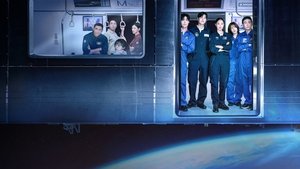

Creator
Creator
Cast
Gong Ryong
Eve Kim
Kang Kang-su
Choi Go-eun
Park Dong-ah
Kang Tae-hee
Mina Lee / Dona Lee
Lee Seung-joon
Santiago Gonzalez Garcia
Choi Jae-ryong
Synopsis
Exploring the Cosmos and the Human Heart in “When the Stars Gossip”
“When the Stars Gossip” is not just a television series—it is an ambitious narrative that weaves together elements of romance, science fiction, and human drama in a uniquely South Korean context. Set against the backdrop of a high-tech space station, the series presents a compelling exploration of what it means to be human when removed from the familiar confines of Earth.
At its core, the series revolves around the fateful encounter between Gong Ryong, played by Lee Min-ho, an obstetrician-gynecologist turned space-tourist, and Eve Kim, portrayed by Gong Hyo-jin, a Korean-American astronaut. This unlikely pairing sets the stage for an exploration of connection and identity in an environment that is as alien as it is isolating. The narrative boldly juxtaposes the intimacy of human relationships with the vast, impersonal expanses of space—a setting that magnifies every emotional nuance and conflict.
The character dynamics are further enriched by a well-crafted ensemble cast. Secondary characters, from seasoned astronauts like Park Dong-ah to scientists such as Dona Lee and Mina Lee, add layers of complexity and intrigue. Their interactions underscore the series’ central themes: the tension between duty and desire, the collision of personal ambition with collective responsibility, and the perennial human struggle to find meaning in an ever-changing universe. Even the corporate subplot—exemplified by Choi Go-eun, the CEO entangled in personal and professional dilemmas—mirrors the broader societal tensions of ambition versus vulnerability.
From a production standpoint, “When the Stars Gossip” is a tour de force. The script, penned by Seo Sook-hyang, combines a deft touch for character-driven drama with the spectacle of a futuristic space setting. Under the direction of Park Shin-woo, the series transcends the limitations of its medium by creating a visual and emotional tableau that captures both the awe of outer space and the intimacy of human connection. The extensive preparation—from the casting of top-tier talent like Lee Min-ho and Gong Hyo-jin to a production period that spanned from April 2022 to early 2023—reflects a commitment to quality and innovation rarely seen in television today.
Moreover, the series’ availability on platforms like Netflix alongside its cable airing on tvN has allowed it to reach a global audience. This dual release strategy not only underscores the international appeal of Korean drama but also highlights how traditional storytelling can be reinvented for a digitally connected world. The soundtrack, with tracks such as “Feel Like a Million” performed by Big Naughty, further elevates the viewing experience by intertwining modern musical aesthetics with the series’ thematic concerns.
Critically, the viewership ratings, measured meticulously by Nielsen Korea, illustrate both the series’ successes and its challenges. Fluctuating ratings suggest that while the narrative resonates deeply with many viewers, its experimental structure and ambitious themes invite discussion and debate—a sign of a work that dares to challenge the conventional boundaries of genre television.
In conclusion, “When the Stars Gossip” stands out as a vibrant experiment in contemporary storytelling. By merging the wonder of space exploration with the depth of human emotion, the series invites its audience to ponder questions of identity, destiny, and connection in an age of rapid technological advancement. It is a poignant reminder that, regardless of where humanity finds itself—whether on Earth or among the stars—the search for meaning and companionship remains an enduring, universal quest.
TMDb Rating 8.4 16 votes
First air date Jan. 04, 2025
Last air date Feb. 16, 2025
Seasons 1
Episodes 16
Average Duration 70 minutes






























